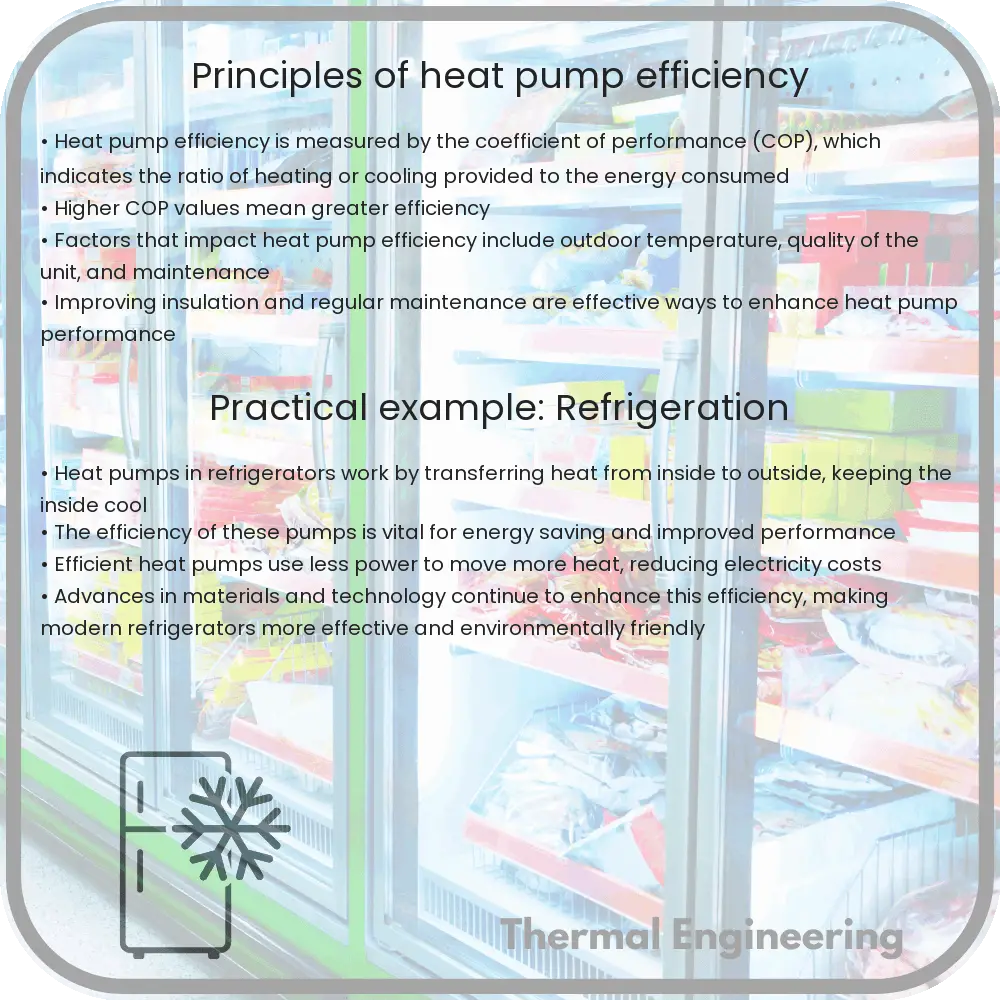Explore how heat pumps provide energy-efficient heating and cooling by leveraging thermodynamic principles, ensuring optimal performance across various climates.

Understanding the Principles of Heat Pump Efficiency
Heat pumps are increasingly popular devices that provide an energy-efficient alternative to furnaces and air conditioners. They work by moving heat rather than generating it, allowing them to heat and cool spaces with significantly reduced energy consumption. To truly appreciate the utility of heat pumps, it is essential to understand the principles that govern their efficiency.
How Heat Pumps Work
At their core, heat pumps operate based on the principles of thermodynamics, utilizing the heat transfer by absorbing heat from a cooler space and releasing it into a warmer one. This process involves four main components: the evaporator, the condenser, the compressor, and the expansion valve. The cycle starts in the evaporator, where the refrigerant absorbs heat and evaporates; the compressor then pressurizes the vapor, increasing its temperature. This hot vapor moves through the condenser, releasing the absorbed heat into the heating system before the refrigerant returns to liquid form and the cycle repeats.
Measuring Heat Pump Efficiency
The efficiency of heat pumps is most commonly measured by the coefficient of performance (COP) and the Seasonal Energy Efficiency Ratio (SEER). The COP measures the ratio of heat output to electrical energy input. It is generally higher in conditions where the temperature differential between the heat source and destination is smaller.
- The equation for COP is given by:
COP = Heat Output (W) / Electrical Input (W)
The SEER, on the other hand, measures the cooling efficiency of the heat pump over a typical cooling season. It is calculated by the ratio of the cooling output across the season to the total electrical energy input during the same period.
- The formula for SEER is similar to COP but over an extended period:
SEER = Total Cooling Output (Wh) / Total Electrical Energy Input (Wh)
Factors Affecting Heat Pump Efficiency
Several factors can influence the efficiency of heat pumps, including the external temperature, the quality of installation, and maintenance. Here’s how these factors play out:
- External Temperature: Heat pumps are most efficient in mild climates. When the temperature drops too low, the COP decreases and additional energy may be required to maintain efficiency.
- Installation Quality: Proper installation is essential for optimal heat pump performance. Incorrect sizing or poor handling can lead to inefficient operation and higher energy costs.
- Maintenance: Regular maintenance such as checking filters, ducts, and refrigerant levels ensures that the heat pump operates at peak efficiency.
Advancements in Heat Pump Technology
Recent advancements in heat pump technology focus on improving efficiency even in colder climates. Innovations like dual-source heat pumps, which combine the features of air-source and geothermal heat pumps, and variable-speed compressors that adjust their output to the current demand, are making it possible to reap the benefits of heat pumps in a wider range of temperatures and settings.
In conclusion, understanding the efficiency of heat pumps is crucial when considering them as a potential heating and cooling solution. By measuring their performance through COP and SEER, and taking factors like climate, installation, and maintenance into account, one can maximize the benefits afforded by this sophisticated yet environmentally friendly technology.